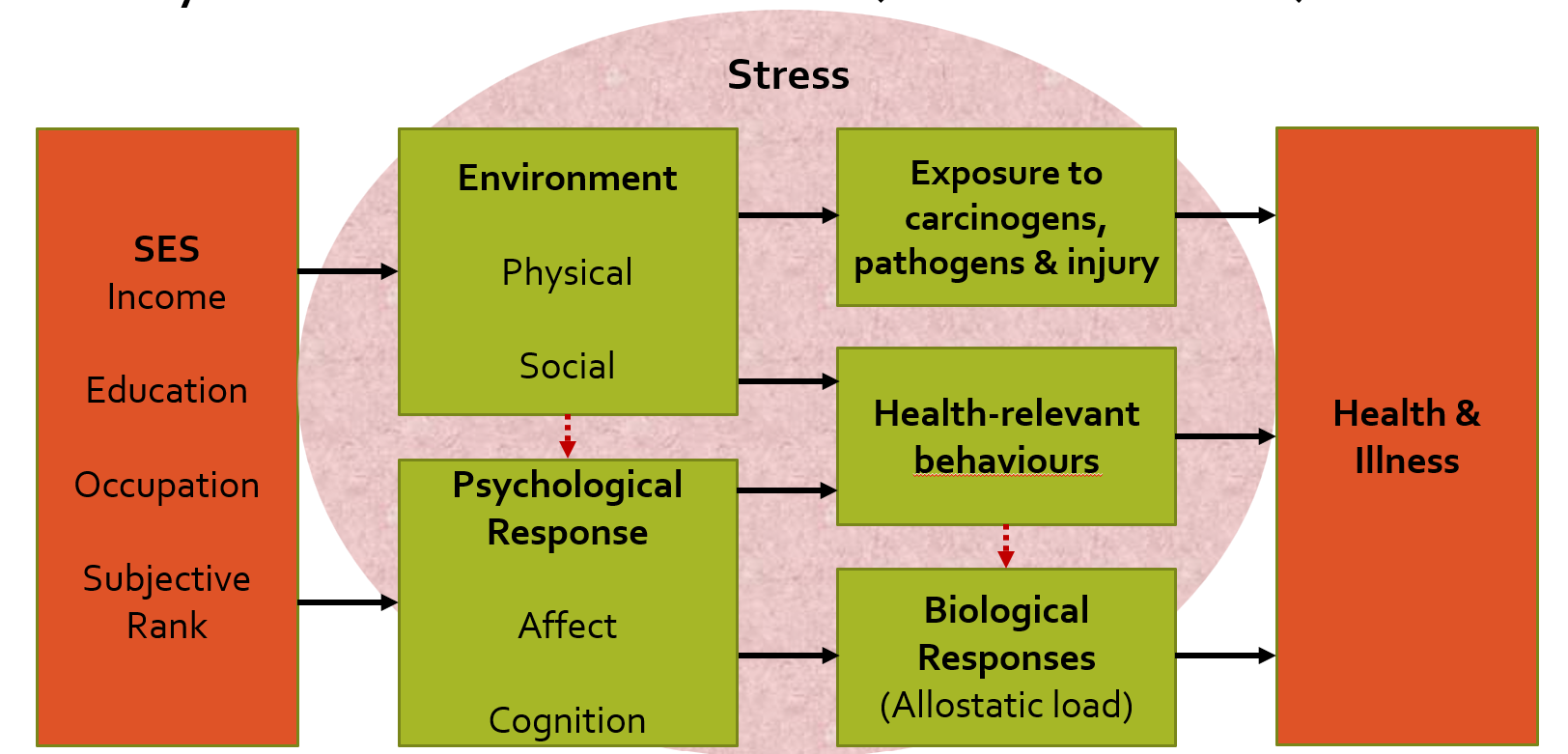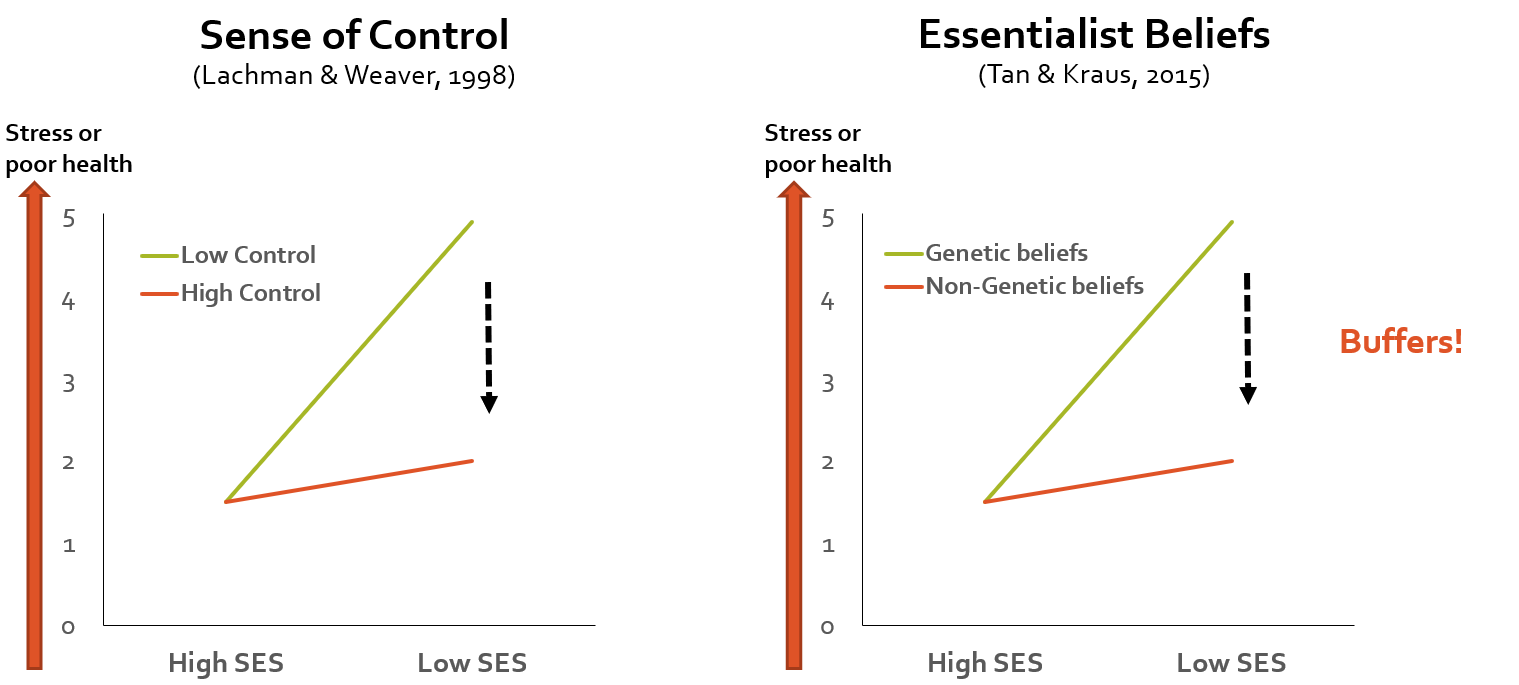inequalities in health wk11
1/9
There's no tags or description
Looks like no tags are added yet.
Name | Mastery | Learn | Test | Matching | Spaced |
|---|
No study sessions yet.
10 Terms
Health gradient
some people (low SES) are chronically ill and never seem t fully recover even with medications and interventions (Michael marmot)
Perceived class differences (psychological experienced for perceived rank can affect health) Nancy Adler
effect of additional income on health greatest for the poorest groups
most health disparities associated with ses occur in middle income group
most effect on cardiovascular disease, arthritis, diabetes, chronic respiratory diseases, and cervical cancer, as well as for the psychiatric disorders of schizophrenia, substance abuse, and anxiety.
lower SES worse health
evidence: Whitehall study (10 yr survival increased with occupational grade. effect remained 25 years later even after retirement
London service sector has high emphasis on rank and category, but same health benefits
Yet, there is still strong association between employment rank and mortality rates
SES - health relationship cannot be fully explained by lack of access to health care
psychosocial processes (mechanisms)
environment
physical (toxins and pathogens, water supply)
Noise, pollution and crowding
poor infrastructure - accidents
physically dangerous jobs
limited access to recreational facilities, quality health care, healthy food
social
crime and violence
social conflict
less social support
psychological response
affect
awareness of neg stereotypes being treated differently, and discrimination
daily distress
cognition
low sense of personal control (perceived control at work explained more than half of the health gradient among civil servants low optimism - hopelessness, hostility and anger —> greater risk of chronic health disorders (CHD)
slower recovery from major surgeries (coronary bypass surgery)
—>health compromising behaviors
stress relieving behaviors - eg smoking sedentary lifestyle, high fat diet
low adherence to medical treatments among the less educated
high ses diabetics showed better blood sugar control than low ses
fully explained by adherence to treatment / interventions
—> biological responses
allostatic load (AL) cumulative wear and tear from chronic exposure to stress
AL score - sum of indicator in highest risk quartile (top 25%)
BP, waist to hip ratio, cholesterol, blood glucose, cortisol, DHEA (dehydroepiandrosterone), epinephrine, and norepinephrine.
—> higher disease risk and mortality, poorer physical health, cognitive function and mortality
lower ses elderly had higher baseline

Social level
income, education, jobs, happiness, housing, health, stress, background, opportunities
hierachy and health
Those at the bottom of the hierachy have high cortisol and stress response.
alpha monkeys died off —> rank distinction broke down —> baboons recovered and thrived, and social affliation became the norm. absense of stress = less high BP etc
social class (SES)
objective social class - concrete and enduring —> income, education, occupation (or your parent’s occupation)
subjective social class - own judgement of where you stand along the social ladder in society, relative to others - related to but also independent of objective ses
social ladder
“would you consider yourself to be lower class middle class or upper class”
relation .3-.6 overlap
better indicator of cardiac index, body fat distribution, cortisol response, awakening cortisol
WHY?
subjective ses includes objective ses and non material resources such as optimism, fin stability, psychological resources, lifetime social experience
can capture influences of psychological stressor - social comparison, being subordinate to others, discrimination, social rejection
Psychosocial Processes in Explaining the Gradient Between Socioeconomic Status and Health
as ses declines demands increase and resources for dealing with demands decrease —> exposed to more stress —> larger psycholgical responses —> stress and stress reactivity, cumulative effects of repeated adaptations —> less capacity to respond to envrionemental challenges —> more vulnerable to disease
income inequality —> highetened social anxiety, diminished social trust, underinvestment in infrastructure —> higher mortality
links to racial inequality
in areas with low women’s equality, husbands status is a better predictor of health than the women’s
The SES-health gradient is strongest at birth (i.e., infant mortality) and in mid to late adulthood.
length of time spent living in low- SES conditions are also important predictors of adult health outcomes.
reverse causality
psychosocial buffers
protective factors that reduce stressors leading to poor health
social support
psychological beleifs (sense of control, optimism, non essentialist (genetic) beleifs
resilience strategies (shift and persist)
some low ses individuals do not show health deficits and have comaprable health with high ses
can identofy psychological inteventions and policies to reduce ses disparities in health

Shift and persist (psychological response)
protective strategy against stressors, esp for low ses children, adolescents and young adults, minority groups, chronic illness
shift: accept and reappraise situation —> facilitates secondary control
accept stressor
reappraise stressors to adjust to external env — reevaluating a stressful situation to reduce emotional impact —> higher emotional wellbeing
learning from situation, thinking abt gd in the situation
persist: meaning and optimism —> sustains secondary control
find meaning in life - reconcile stressful encounters with own beliefs
maintain optimism abt future
high Shift and high persist: health gradient between high and low ses not steep (inflammation and obesity studies)
why useful: low resources - changing self (secondary control) more viable than primary control / changing the environment

Shift and persist as a strategy for health
stable and positive role models
attachement, socialisation of behaviors, future orientation
emotional regulation and coping responses (shift)
keep children focused on future (persist)
successful role models inspire
positive attachment figures
increase optimism
social support - trust thier world and can seek help
shift and persist
psychological response